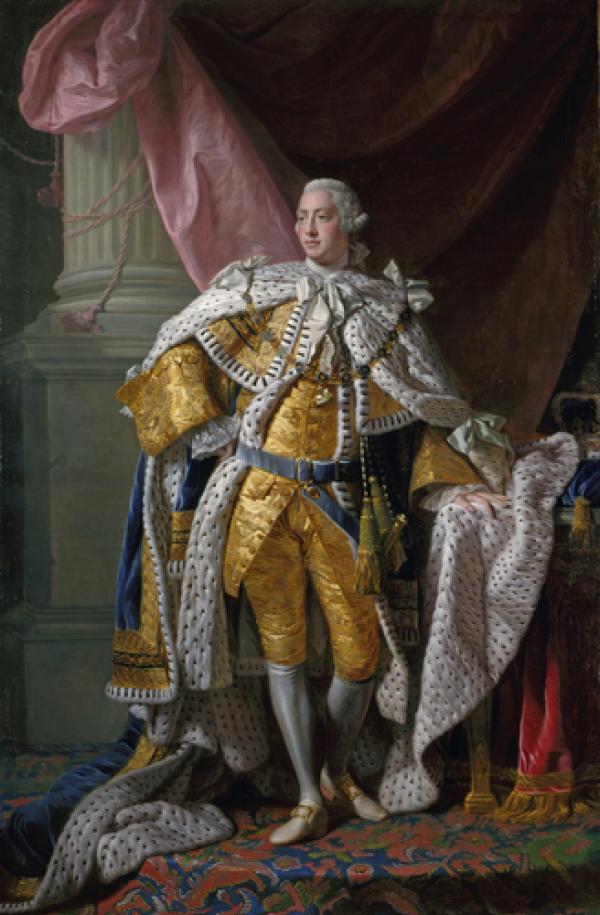Lesson Plan
Created by Sherri Brown

(King George III)
Overview:
To compare and contrast both side of the American Revolution by analyzing the characteristics and roles of both George Washington and King George III. The students will determine whether or not King George III was a royal “brute”, as American patriots claimed, and whether or not George Washington was a traitor, as claimed by the king’s supporters. The teacher will provide the learner facts about both men’s characteristics through reading parts of the book, George vs. George: The Revolutionary War as Seen by Both Sides, by Rosalyn Schanzer. Also, discuss the differences between kings and presidents, and democracies and monarchies.
Background Information:
In the times leading up to the American Revolution, Great Britain passed many acts that affected the American colonist living in what is now the United States. King George imposed higher taxes, limited trade and power of the colonial government, and forced the colonist to house British troops.
The colonist thought these acts and their limitation of power was unreasonable and wanted to be free from tyranny by the British king. These acts resulted in the American Revolutionary War. General George Washington was the leader of the Continental Army, and eventually, the first elected president of the United States. Washington did not wish to be king of the newly formed nation, as many thought he should, but rather a leader for the people.
Lesson Objective:
Compare and contrast portraits of George Washington and King George III.
Standards:
G5-H-5; G5-PIS-1,a and e; G5-G2, a and e; G5-SSS and M-3; G5-SSand M-6; G5-SSand M-7
Materials:
George vs. George: The Revolutionary War as Seen by Both Sides, Rosalyn Schanzer
Overhead transparencies of the two Georges’ portraits
For information on the portraits, see:
George Washington (Lansdowne portrait) by Gilbert Stuart, oil on canvas, 1796
King George III in Coronation Robes by Allen Ramsay, oil on canvas, c. 1766
Procedures:
Compare portraits of King George III and President George Washington.
1. Ask spiraling questions to analyze portraits (
). Students can work in groups of two or three to record observations.
2. Regroup as a whole class and discuss questions. Write similarities and differences on board.
3. Students will independently complete a Venn diagram of similarities and differences of George Washington and King George III
Assessment:
1. Informal assessment including participation in class discussion and small group, working cooperatively with partner or small group.
2. Formal assessment including spiraling questions worksheet and
File
.
Accommodations for students with disabilities:
1. Pair with a peer that is a strong writer/reader.
2. Write similarities and differences as well as discussing orally (whole group).
3. Require responses for parts 1 and part 2 or spiraling questions, or possibly only part 1.
4. Require only two similarities/differences for each part of the Venn diagram instead of three for each part.
5. Provide student copy of notes from spiraling question discussion.
Conclusion:
1. Share new comparisons or differences generated by homework assignment.
2. Continue discussion and further activities about king- monarchy/president-democracy.
